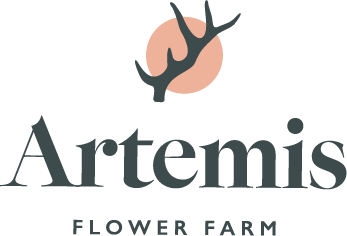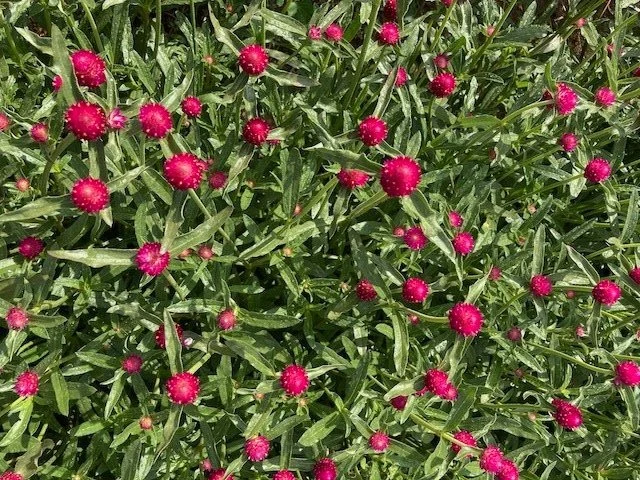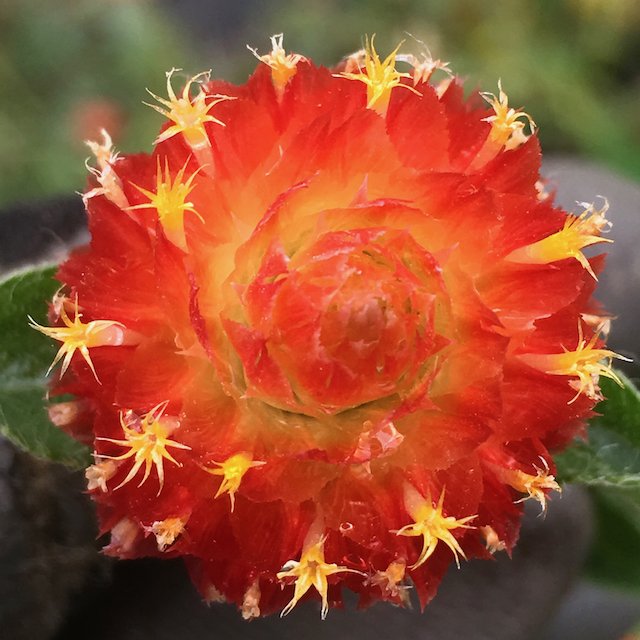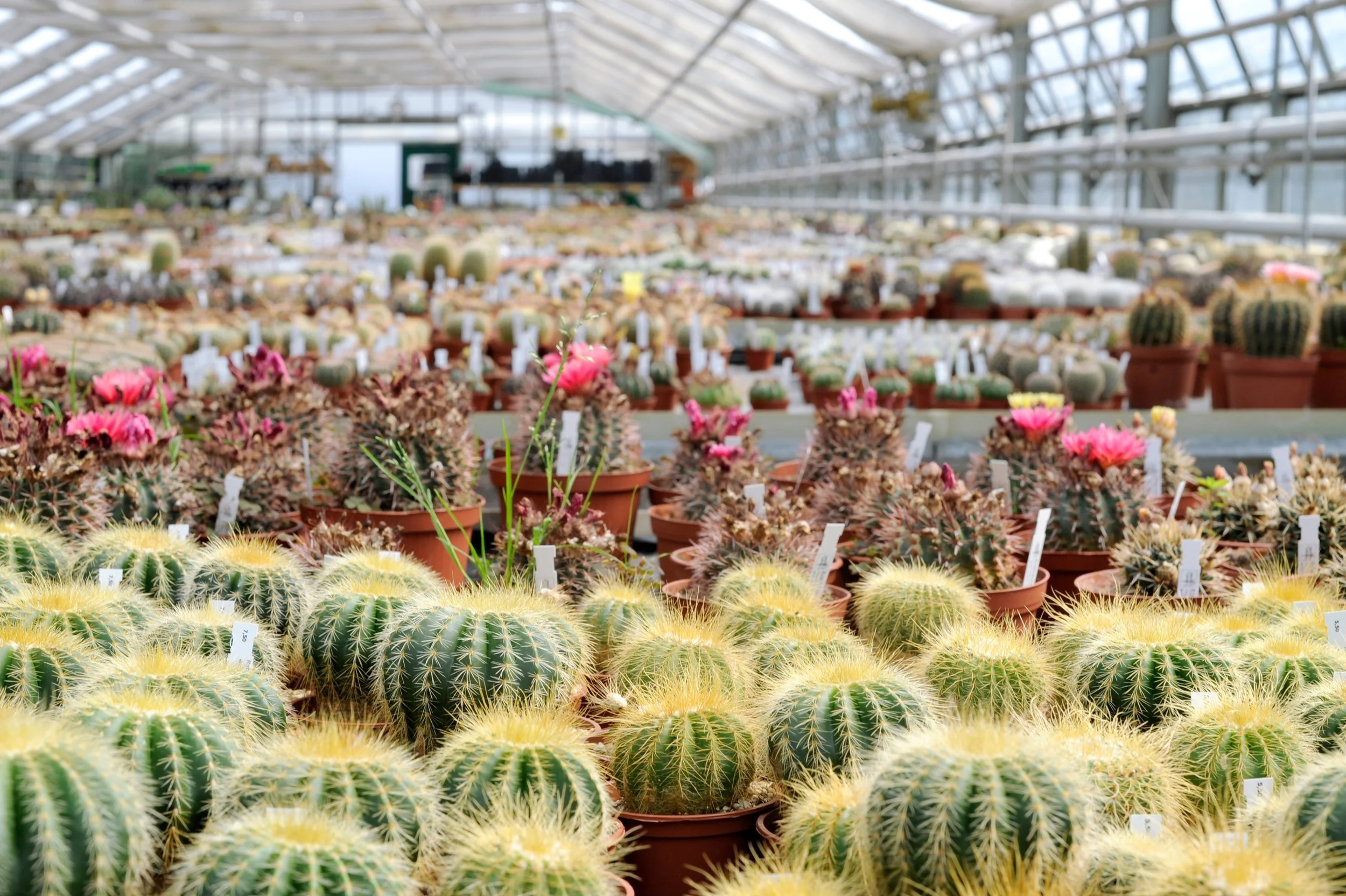Gomphrena: Flower Spotlight
This article comes from our series of flower spotlights, which are adaptations of the newsletters we send to members of our flower share throughout the season. You can see more spotlights by heading here.
Gomphrena AKA Globe Amaranth: Gomphrena globosa and G. haageana
Gomphrena haageana - this variety is called QIS Carmine.
Look at these tiny little sea anemones!
If you see a one-inch round papery flower in your bouquet, something that looks like a little gumdrop, it's gomphrena!
We grow gomphrena from seed, starting in April, and transplant them out after frost has passed. They can be short-stemmed, but if we plant them in the shade of a taller plant, like sunflowers, broom corn, or zinnias, they get beautiful long stems that we can include in bouquets. We also plant them quite tightly, with 6 rows per bed and 6 inches between plants in the row. We usually plant two successions so we can continue to have quality gomphrena through the first frost and so we can have plenty to dry for wreaths and other winter crafts.
The Greek and Latin of these names are simple - gomphrena is just the name of this plant in Greek, and globosa means ‘round’. Haageana refers to the Haage family of Germany, who were famous cactus growers; they still run a large cactus garden in Germany. Gomphrena haageana must have gotten their name because of its spiny pokey little heads - it is a bit spinier than the globosa varieties.
G. globosa is native to Panama and Guatemala, but is now grown all over the world. In Hawaii, it is used to make long-lasting leis, and in Nepal to make protective garlands. It dries incredibly well - if you pluck the stems from your bouquet and hang them upside down, they will dry straight and you can decorate anything with them! G. haageana is native to Texas and Mexico, and acts as a perennial in its home range. This species displays red, orange, and bright hot pink colors, rather than the cooler whites, pinks, and purples of G. globosa.
I hope you find delight in the tiny things — like gomphrena!
Cacti at the Kakteen-Haage nursery in Germany.




